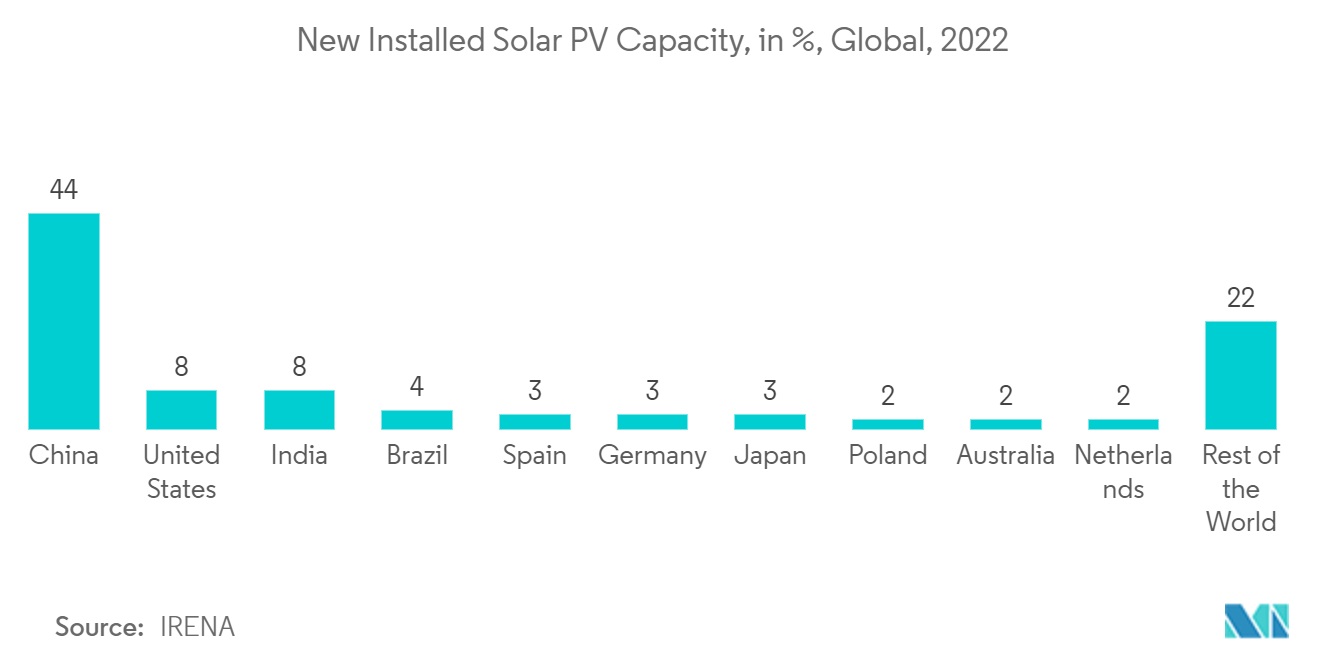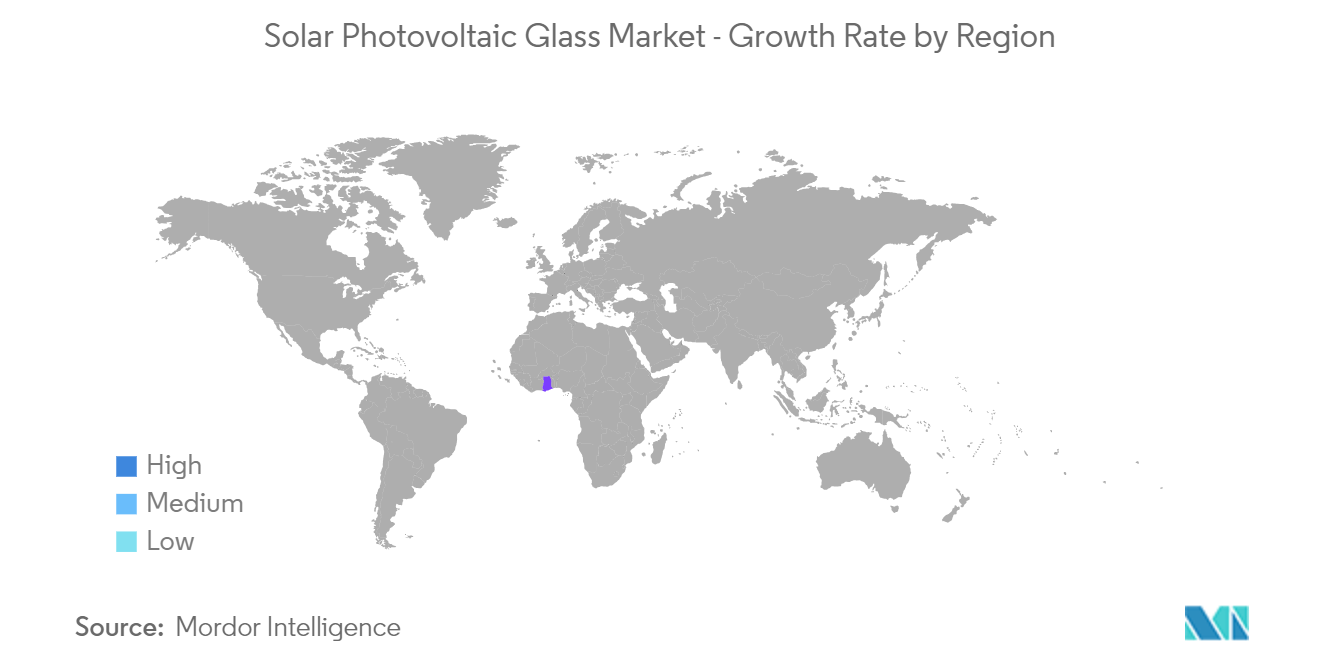Market Trends of Solar Photovoltaic Glass Industry
Increasing Demand from the Non-residential Sector
- Solar photovoltaic glass is installed in commercial buildings for the building’s electricity use. The installation process helps reduce the use of electric light during the day in buildings by allowing natural light through photovoltaic glass.
- Commercial buildings like retail stores, office spaces, and hospitals give higher preference to photovoltaic glass to reduce environmental pollution and save energy through rooftop solar panels, thus making it an alternative source for electricity generation.
- The power generated from solar photovoltaic cells reduces the carbon footprint and greenhouse gas emissions and ensures energy cost savings. Variance in photovoltaic efficiency and light penetration among these products enables multiple options for architectural design.
- As per the report of the IRENA, the percentage of newly installed solar PV capacity was the highest in China (44%), followed by the United States (8%), India (8%), and Brazil (4%).
- In the United States, corporate solar users doubled their solar capacity over the last two years. According to the US Environmental Protection Agency (EPA), some major retail stores like Staples, Starbucks, Sprint, Ahold USA, and Best Buy increased the installation of solar photovoltaic panels in their retail stores and buildings.
- In July 2022, a major New Jersey shopping mall installed a 3.49 MW solar project. The photo voltaic system spans over , spanning over 225,500 square feet of the mall’s rooftop and contains about 9,000 solar panels. The project is estimated to produce over 4 million kWh of clean, renewable energy for the shopping center. In November 2022, Amazon announced the completion of the largest on-site solar energy installation in Europe, with more than 13,300 solar panels with a renewable energy capacity of 5.26 MW, at its facility in Hermanas (Seville), southwest Spain.
- The Indian office buildings market is gradually recovering from the pandemic, as companies in the IT and BFSI sectors, the knowledge industry, and others invite employees to work from the office. Thus, solar photovoltaic glass installations in office buildings are anticipated to increase.
- Furthermore, the Goa Energy Development Agency (GEDA) re-floated bids for 600 kW solar rooftop power plants at district hospitals in north and south Goa. The installation of solar panels is likely to drive the market studied.
- Thus, the market for solar photovoltaic glass is expected to witness steady growth during the forecast period.

The Asia-Pacific Region to Dominate the Market
- The Asia-Pacific region is expected to dominate the solar photovoltaic glass market. In developing countries like China, India, and Japan, the crisis in electricity supply has resulted in increasing the scope for self-producing electricity using solar photovoltaic glass.
- The largest producers of solar photovoltaic glasses are in the Asia-Pacific region. Some of the leading companies in the production of solar photovoltaic glasses are Jinko Solar, Mitsubishi Electric Corporation, Onyx Solar Group LLC, JA Solar Co. Ltd, and Infini Co. Ltd.
- China is the world’s largest solar photovoltaic glass manufacturer. In July 2022, China's Ministry of Industry and Information Technology revealed that the country's solar glass capacity reached 64,000 metric tons (MT) per day across 348 production lines from 38 companies at the end of June, out of which 313 production lines with a combined capacity of 59,000 MT are operational.
- The government of India announced several policies and initiatives to promote the transition toward renewable energy. For instance, the Production Linked Incentive Scheme (PLI) for the National Programme on High-Efficiency Solar PV Modules for achieving manufacturing capacity of Giga Watt (GW) scale in High-Efficiency Solar PV modules with an outlay of INR 240,000 million (USD 2,892.11 million) was introduced to boost domestic manufacturing and solidify India's position as a solar powerhouse.
- Japan is also trying to expand its installed solar capacity to reduce the share of nuclear energy in its energy mix. It aims to expand installed solar capacity to nearly 108 GW by 2030. However, due to the high solar penetration rate in the residential sector, the ground-mounted segment is expected to grow the fastest, creating a demand for larger, central inverters for large utility-scale projects.
- South Korea plans to install 30.8 GW of solar energy capacity by 2030. According to the latest figures from the International Renewable Energy Agency (IRENA), it had reached 20.9 GW of cumulative installed PV capacity at the end of 2022.
- The Indonesian government published a draft of its Comprehensive Investment and Policy Plan (CIPP) to set out Indonesia's decarbonization initiatives for 2050, which include reaching net zero and expanding the country's installed solar capacity to 264.6 GW by the middle of the century.
- The aforementioned factors, coupled with government support, are expected to contribute to the increasing demand for the solar photovoltaic glass market in the Asia-Pacific region during the forecast period.


